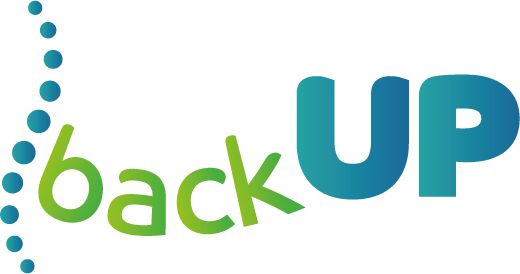
Personalised Prognostic Models to Improve Well-being and Return to Work After Neck and Low Back Pain (Back-UP)
Objetivos
NLBP is a leading cause for years lived with disability in Europe and worldwide. About 70% of all adults experience NLBP at some point in their lives, and both conditions are among the top ten in terms of overall disease burden expressed as disability adjusted life years.
Moreover, low back pain is the leading cause work absence in Europe, and it causes an enormous burden on individuals, industry and governments.
PROBLEM
Management of NLBP is a difficult challenge for healthcare professionals and prevention services in this field, since their decisions have a decisive impact on the patients future health and welfare, as well as on the economic burden on the public and private healthcare systems. However, health professionals often lack appropriate information to:
1. To tailor the management and follow-up of individual patients.
2. To predict the outcome of a certain treatment in terms of:
a. The expected time to improvement and safe return to work.
b. The probability of a faster and more effective improvement as a result of particular interventions.
c. The risk of recurrent pain episodes, and measures that should be taken to prevent them.
d. The balance between expected effects, costs and harms of each possible intervention.
AIM
The aim of this project is to create a prognostic model to support more effective and efficient management of NLBP, based on the digital representation of multidimensional clinical information, and in-silico assessments of possible interventions.
Patient-specific models will provide a personalized evaluation of the patient case, using multidimensional health data from the following sources:
1. Personal, health, psychological, behavioural, and socioeconomic factors related to NLBP.
2. Biological patient characteristics, including musculoskeletal structures and function, and molecular data.
3. Workplace and lifestyle risk factors.
The outcomes of the system will be:
1. Prognostics on recovery probability and time, depending on the administered intervention.
2. Risk of recurrence after recovery.
3. Simulation of affected musculoskeletal function during and after recovery.
4. Costs associated to NLBP management and return to work.
PROJECT OBJECTIVES
1. Integrate multi-factorial models to assist the prognostics of non-specific NLBP.
2. Design an evidence-based protocol to support an improved prognostic assessment of NLBP.
3. Support personalized plans of intervention for recovery and adaptation of workplace.
4. Integrated system for effective data management and visualisation.
5. Demonstrate the value of the developed tool.
Website: http://backup-project.eu
Empresas colaboradoras
Coordinator:Instituto de Biomecánica (IBV, Spain)
Partners:
GMV Soluciones Globales Internet S.A.U. (GMV, Spain)
MAZ Mutua colaboradora con la Seguridad Social Nº 11 (MAZ, Spain)
Central Institute of Labour Protection-National Research Institute (CIOP-PIB, Poland)
The University Of Leeds (UNIVLEEDS, United Kingdom)
Roessingh Research and Development (RRD, The Netherlands)
Keele University (KU, United Kingdom)
Karolinska Institutet (KI, Sweden)
Norges Teknisk-Naturvitenskapelige Universitet (NTNU, Norway)
empirica Gesellschaft für Kommunikations- und Technologieforschung mbH (EMP, Germany)
GENOS (Croatia)
University of Split - Faculty of Science (PMFST, Croatia)
Università di Padova (UNIPD, Italy)

Duración y referencia
Fecha de inicio: 01-01-2018
Fecha de finalización: 31-12-2020
Referencia del proyecto: 777090



